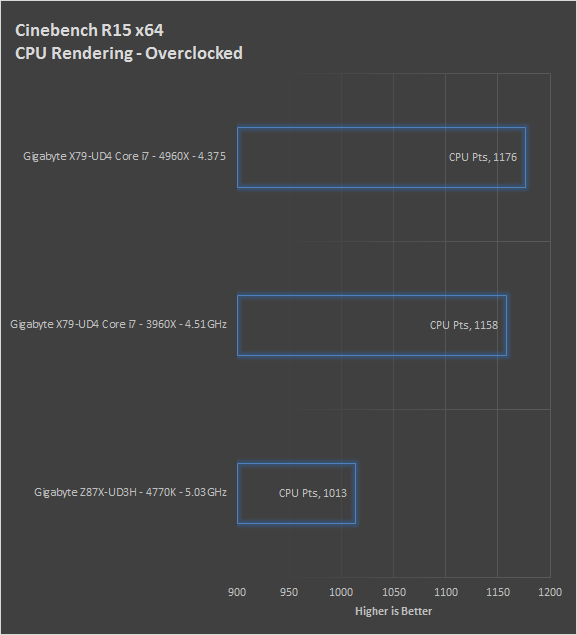Section II - Performance Tests, Synthetic
In this section of testing we cover the synthetics. These are tests that run a scripted sequence of internal APIs or that use another installed application to perform a series of scripted events. They are great in that they can provide reproducible results across various platforms. On the down side, synthetic tests can be fooled with driver tweaks and optimizations. In some cases it is necessary to rename the .exe file to something generic to discover if this is the case. In any event when this is needed (when a test shows a drastic difference in performance over the renamed exe) we will note this and show both results for comparison.
PCMark7 -
PCMark7 is the latest general performance test from FutureMark. As each generation of this benchmark has evolved and developed we have watched them add more and more realistic tests to this suite. With this generation we find more media tests, (audio and video transcoding) moving of large files, multiple web page rendering, and much more (the even added DX10 gaming). We use the Overall Performance and Common Usage suites in our testing.
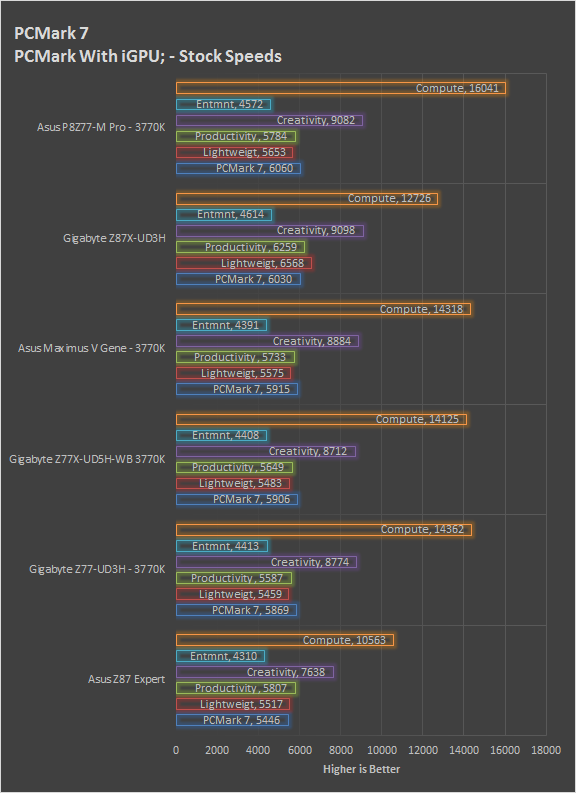
Our PCMark 7 results were interesting. On the Gigabyte Z87X-UD3H we saw a very similar performance hit as we did on the Asus Z87 Expert. This is despite faster memory and also a much more multi-media oriented CPU.
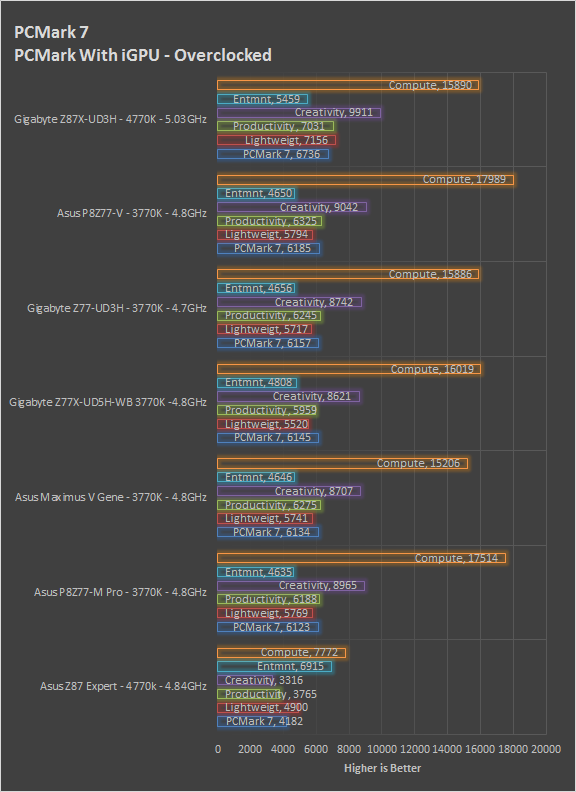
When we pushed the clock speed up to 5GHz things started running in the way we would expect with the Z87X-UD3H coming out on top.
PCMark 8-
PCMark 8 is a little bit of a departure from PCMark 7. Although the application is still intended for benchmarking and does that quite well the methods used to obtain the results are different. Futuremark has decided to break the tests into usage models instead of performance types. Here we see the tests aligned to the home, work, content creation (creative) and storage functions. We ran all of our tests at baseline (no OpenCL acceleration) to get the feel of the motherboard and its ability to run these tests.
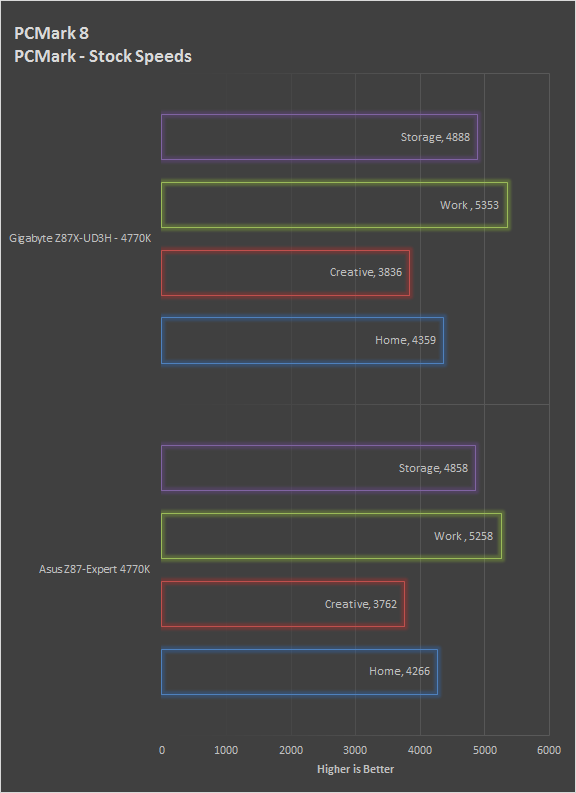
The Gigabyte Z87X-UD3H came out on top for all of the PCMark 8 tests. We see solid performance across the board at stock speeds and when overclocked.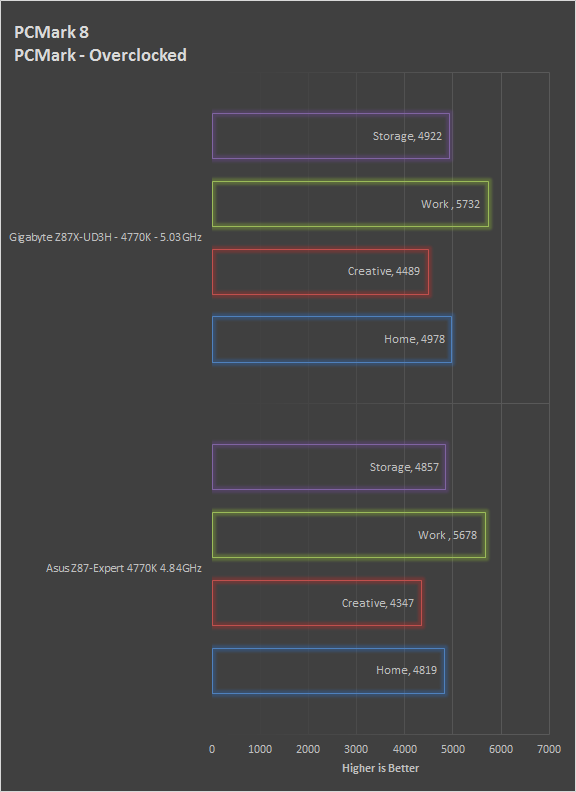
3DMark -
3DMark is the other Futuremark test that we run on our motherboards. This test simulates the typical tasks that a GPU (and system) would have to perform to provide you with a good gaming experience. It is based on the DX9, DX10 and DX11 engines but can only be installed on Windows Vista or later. The suite of tests covers DX9, DX10, and of course DX11 rendering; it also covers AI computations and physics. That’s right I said Physics the latest version of 3DMark uses a Havok physics engine. This removes the advantage that nVidia had with 3DMark Vantage.
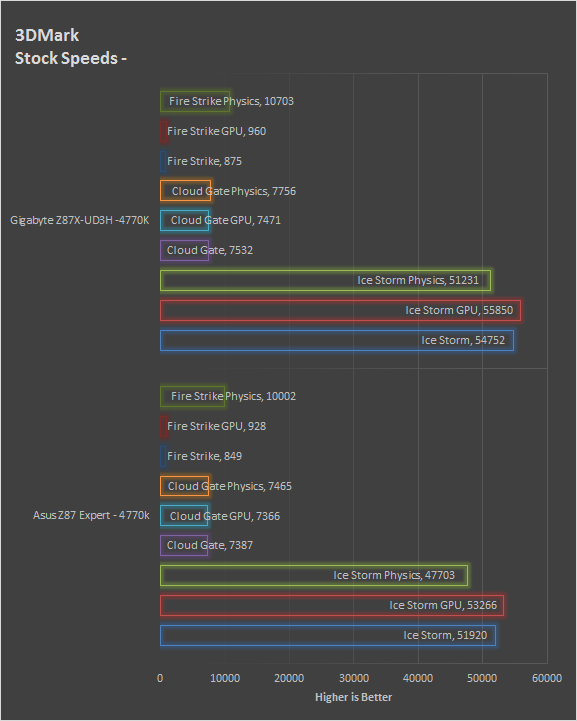
Gigabyte’s Z87X-UD3H also does quite well with 3DMark. We see it squeeze past Asus’ Z87 Expert to come out on top. This should be good news for our gaming test although we really cannot properly gauge performance by a synthetic test.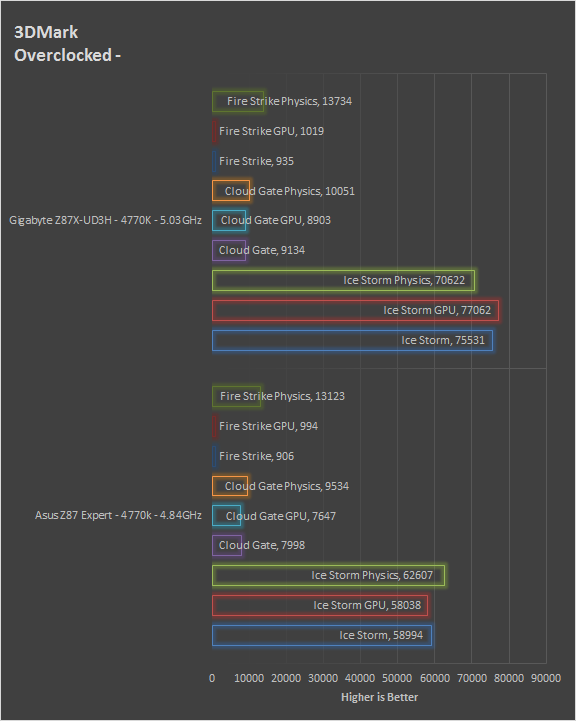
HyperPi 0.99b -
HyperPi is a front end application that allows you to easily run multiple instances of the SuperPi application. SuperPi, for those that are not familiar with it, is an application that measures the time it takes to calculate the number Pi out to as many as 32 million places. This calculation is then checked and run multiple times (up to 24 for a 32M run). This test stresses the CPU, Memory and HDD as data is handed off between the three. If there is a weak link, HyperPi will show it. For our testing we run the 32M test on as many cores (and threads) as the CPU has available. The slowest CPU time is then recorded. The blue bars indicate the slowest time while the red indicate the fastest.

Under HyperPi the Gigabyte Z87X-UD3H does well, but at stock speeds it does not come out on the top of the heap. We see if fall into second place by a little more than a second at its slowest run (it tied for first under its fastest run). When we kicked the CPU up to 5GHz we see it pull out in front by over 2.5 minutes.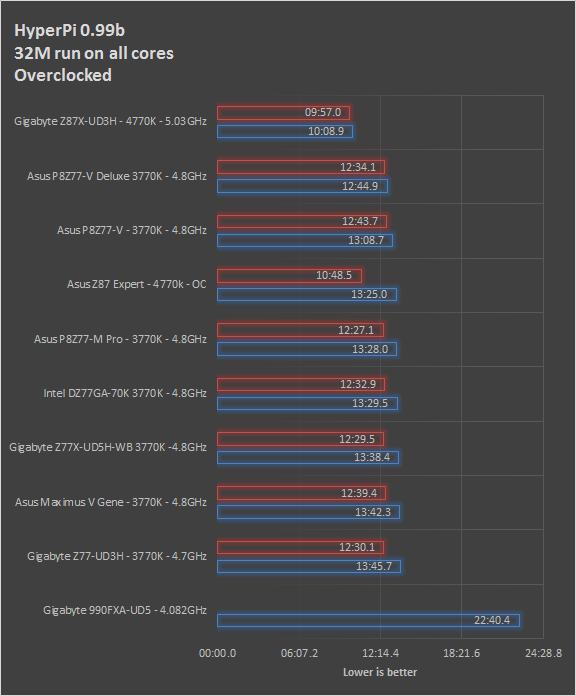
Cinebench R11.5 -
Cinebench R11.5 is the 11th release of Maxon’s rendering test. This test is based off of the Cinema 4D engine, which is one of the industry standard tools for digital animation. It is a powerful product with many different modules that can be “plugged” into it to increase its effectiveness. With Cinebench you get to see how your computer would do using this application. There are two tests; one tests the CPU’s ability to render an image across multiple cores or threads. The other tests your systems ability to handle OpenGL based rendering.
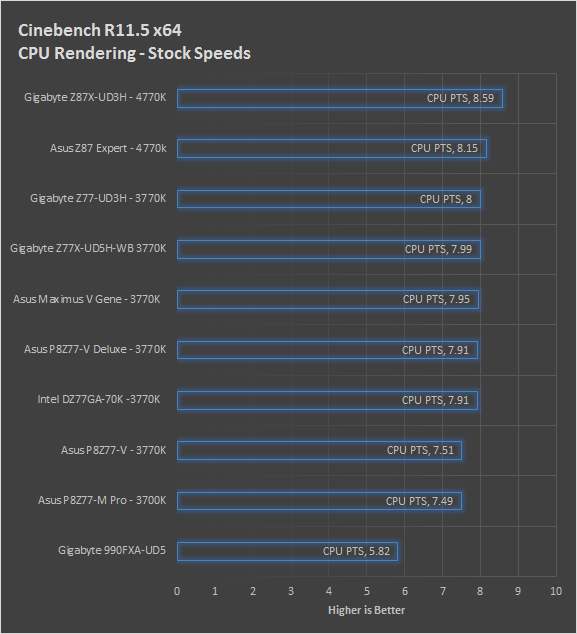

The Z87X-UD3H pulls out in front for the synthetic Cinebench R11.5 testing. We see solid performance at both stock and overclocked speeds. This typically indicates that we will see good performance in our real-world Lightwave test.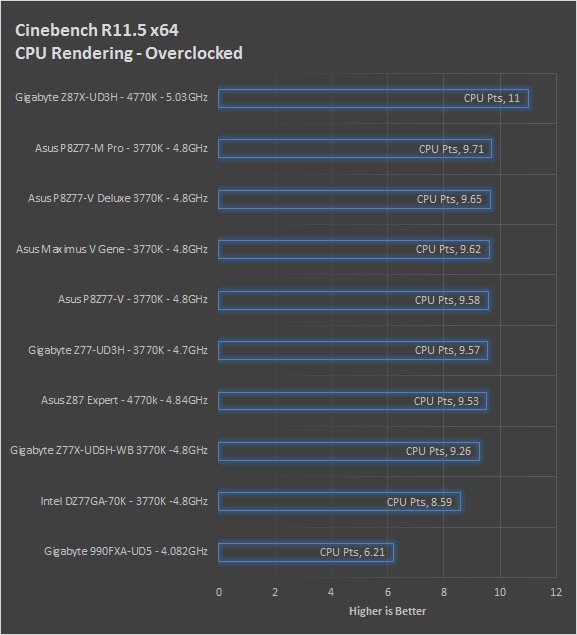
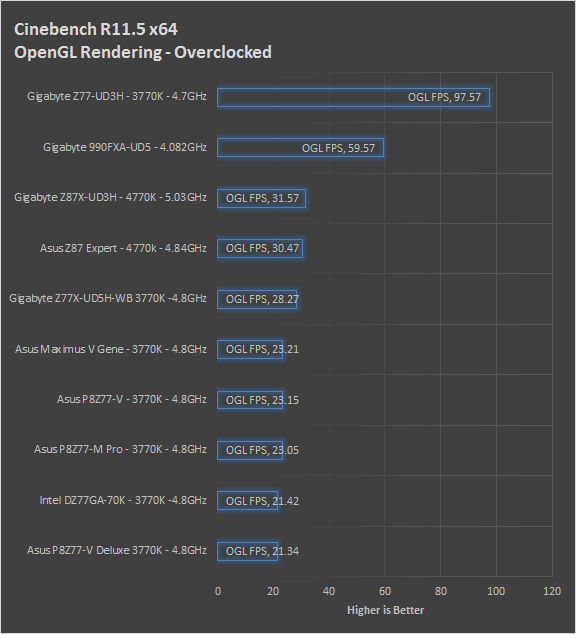
Cinebench R15 -
Cinebench R15 is the 15th release of Maxon’s rendering test. This test is based off of the Cinema 4D engine, which is one of the industry standard tools for digital animation. It is a powerful product with many different modules that can be “plugged” into it to increase its effectiveness. With Cinebench you get to see how your computer would do using this application. There are two tests; one tests the CPU’s ability to render an image across multiple cores or threads. The other tests your systems ability to handle OpenGL based rendering. We are moving to Cinebench R15 for all future reviews.
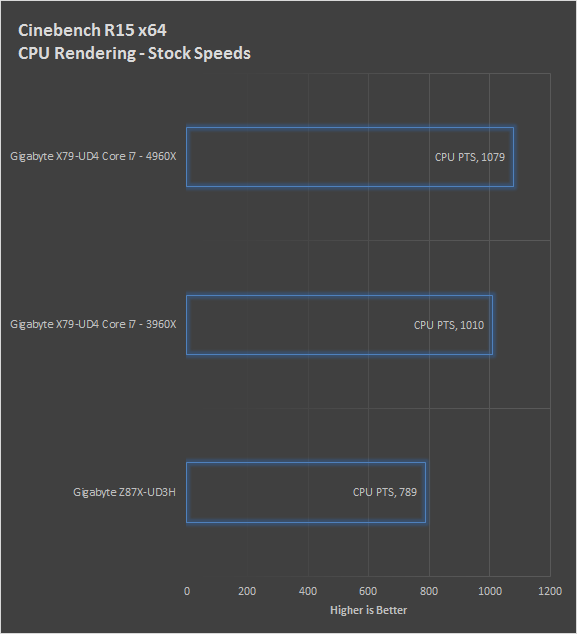
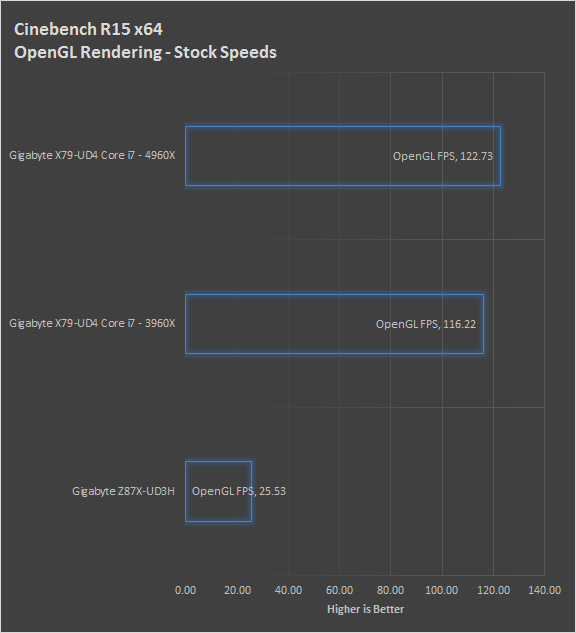
The Z87X-UD3H also is out in front for our Cinebench R15 testing. We see solid performance at both stock and overclocked speeds. Unless we run into another issue we expect very good rendering performance in our real-world testing.